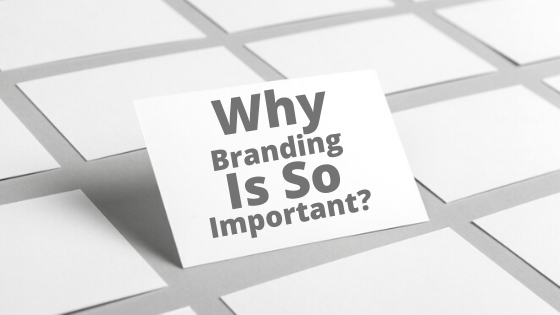How to Develop a Unique Brand Identity?
Branding is a marketing practice in which the company creates a name, symbol, or design that is easily identifiable as belonging to the company. Branding is important because it makes a memorable impression on consumers and allows your customers to know what to expect from your organization. It is a way to differentiate yourself from competitors and clarify what you offer that makes you a better choice.
There are many areas that are used to develop a brand including advertising, promotional merchandise, customer service, online reputation and logo. All these elements work together to create a unique and attention-grabbing professional profile.
In other words, branding is non-negotiable if you want your business to succeed. But, really, why is branding so important? What's wrong with this? And how do you brand your business in a way that will have a real impact on your audience? In this article, we will share the importance of branding.
Branding is very important for a business because it has an overall impact on your company. Branding can change how people see your brand. It can run new business and increase brand awareness.
Branding Gets Recognition
Branding makes a company recognized and known to consumers. The logo is the most important element of branding, as it essentially reflects the face of the company. This is why a professional logo design should be easily memorable, which makes an impression on a person at first glance.
Branding is important to maintain the business in the future. A firmly established brand can increase the value of a business to make more profit in the company's industry. This makes it a more attractive investment opportunity as it is firmly established in the market.
Branding Generates New Customers
Strong branding means a positive perception of the company among consumers, and they are likely to do business with you. Because they can rely on familiarity and a well-known organization. Once a brand is well established, a good customer experience can generate more profits.
Helps You Stand Out From The Competition
It doesn't matter what type of company you have or what type of customers you are - if you're in business, you get some serious competition. Branding helps you establish the ways in which you are the most different, special and unique. It shows your customers why they should work with you instead of your competitors.
Improves Employee Pride And Satisfaction
When an employee works for a strongly branded company, they are more satisfied with their job and have a higher level of pride in the work they do. Working for a brand that is reputable and helps in a high relationship among the public makes working for that company more enjoyable and fulfilling.
A professional presence and well-strategic branding will help the company build trust with potential customers. People are more likely to do business with a polished and professional illustrating company. Being properly branded gives the feel of being an industry expert. This makes the public feel that they can trust your company, products & services and the way it handles their business.
Branding Supports Advertising
Advertising is a good component for branding. The advertising strategy will directly reflect the brand and its desired portrayal. Advertising techniques from trusted companies to promotional products make it easy to create an easy and attractive advertising strategy that plays well in your branding goals.
These are some of the elements of branding that you will need to build to make your business perceived by customers:
Mission Statement And Brand Values
Your mission statement and brand value are the foundation of your branding. Think about your mission as the minds of the activity - a short and concise statement that defines the current state and purpose of your organization. Likewise, your company's vision is its heart, which provides you with an inspiring and motivational snapshot to achieve in the long term.
Brand Guidelines
With a mission and vision statement set for your organization, your brand strategy comes in to take everything in between. This takes the form of brand guidelines. These guidelines are incorporated into a tangible document that will reflect and support your business goals, set you apart from competitors, resonate with customers, provide a template for decision-making and ideas for future marketing campaigns. It will also include all the stylistic elements of your branding, including your color palette, fonts, and the outline of your brand's voice.
Logo
Your logo is the face of your company. Designing a logo is arguably the most important branding for your business. During the design process, make sure who you are as a brand and how you want to be perceived by your customers. Use this for your design strategy.
Website
Designing your website is also an important branding step. When customers come to your website, it should be visually appealing, easy to use, and most importantly, who you are as a brand. Refer to your brand guide to choose your web design elements, similar to your logo.
Know what to avoid
You can follow various steps to build a strong brand identity, but if you are guilty of any of the following practices, your brand may fail.
Don't Give Your Customers Mixed Messages
Try to know what you want to say, and use the correct language and visuals to say it. This because it makes sense to you does not mean that it will make sense to your customers.
Don't Copy Your Competitors
Your competition may have exemplary branding. When you are selling the same products or services, you can do what you know. Check out what your competitors are doing first and put your own twist on it to build your business.
Don't Lose Consistency Between Online And Offline
Your print material may differ slightly from your online presence, but your colors, themes, types and message should all be compatible.
Monitor Your Brand To Maintain Its Brand Identity
Similar to other aspects of your marketing, it is difficult to know what you are doing without tracking key performance metrics. Use Google Analytics, surveys, social media discussions, comments, etc. to track your brand and learn how to talk to people about it. This will give you the opportunity to introduce changes to your brand as needed, whether it is to correct a mistake or improve brand recognition.
How to Develop a Unique Brand Identity?
 Reviewed by FAB Web Studio
on
November 03, 2019
Rating:
Reviewed by FAB Web Studio
on
November 03, 2019
Rating:
 Reviewed by FAB Web Studio
on
November 03, 2019
Rating:
Reviewed by FAB Web Studio
on
November 03, 2019
Rating:















As claimed by Stanford Medical, It's really the SINGLE reason this country's women live 10 years more and weigh on average 42 pounds less than we do.
ReplyDelete(And realistically, it has absoloutely NOTHING to do with genetics or some secret exercise and EVERYTHING to around "how" they are eating.)
P.S, I said "HOW", and not "what"...
Tap on this link to see if this short questionnaire can help you find out your true weight loss possibilities